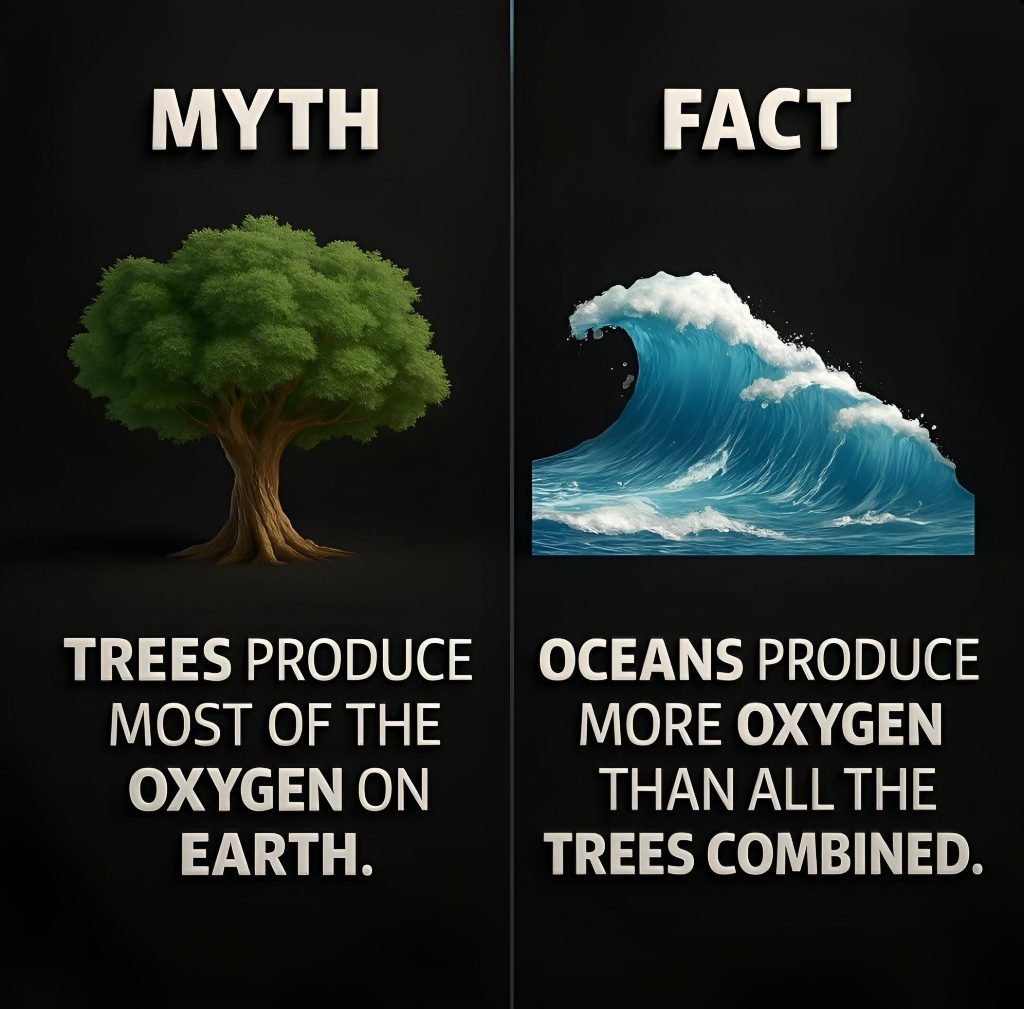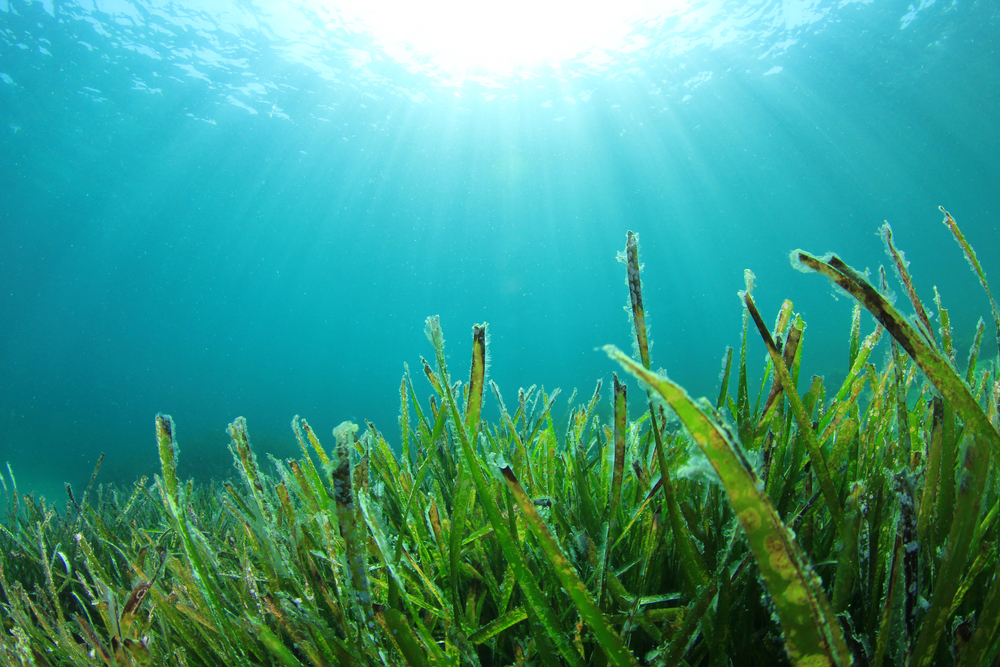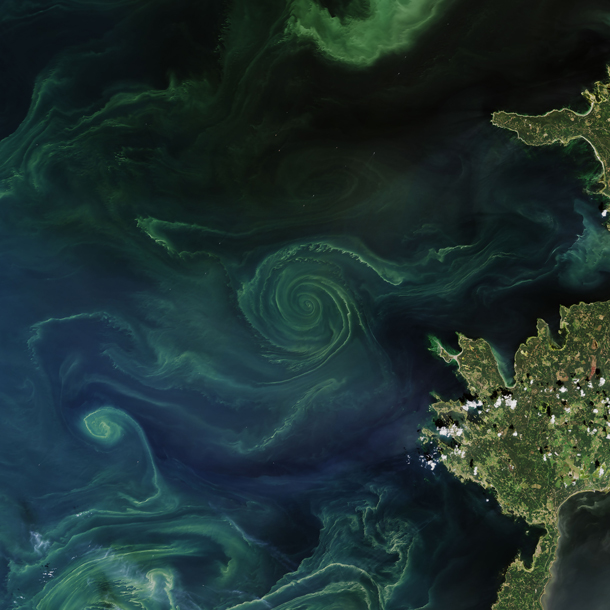When we think of oxygen, most of us picture lush green forests, towering trees, and vast rainforests like the Amazon. While those ecosystems are incredibly important, there’s a hidden force doing even more heavy lifting. And it’s not on land—it’s in the ocean.
Believe it or not, more than half of the oxygen you’re breathing right now came from tiny ocean organisms called phytoplankton. They’re microscopic, barely visible without a microscope, but they’re absolute powerhouses. The sea isn’t just blue—it’s breathing for us.

What Are Phytoplankton?
Think of phytoplankton as the grassy meadows of the sea—floating, plant-like organisms that use sunlight to create energy through photosynthesis. Just like land plants, they absorb carbon dioxide and release oxygen. But here’s the mind-blowing part: despite their size, collectively, these ocean drifters produce over 50% of Earth’s oxygen supply.
There are many types of phytoplankton, including diatoms, cyanobacteria, and dinoflagellates. Each has its own unique role, but together, they form the foundation of the marine food web and a vital component of our planet’s climate system.
Video: Did You Know That the Ocean Produces Half of The World’s Oxygen?
Why We Owe Every Breath to the Ocean
Every time you inhale, odds are the oxygen that fills your lungs came from the ocean. Scientists estimate that phytoplankton contribute between 50% and 85% of all atmospheric oxygen. That’s more than all the world’s forests combined.
And they’re not just making oxygen—they’re also locking away carbon dioxide. Phytoplankton absorb massive amounts of CO₂ from the atmosphere. When they die, many sink to the ocean floor, effectively trapping that carbon for centuries. It’s like nature’s own carbon capture program.
The Ocean: A Giant Breathing Machine
Let’s step back and appreciate this: the ocean covers about 70% of the Earth’s surface, and it’s teeming with microscopic life. Each drop of seawater can contain thousands of phytoplankton cells, quietly working to keep our air clean and breathable.
This underwater system operates like a massive set of lungs for the planet. During the day, phytoplankton soak up sunlight and carbon dioxide. At night, some release oxygen into the water and atmosphere. This cycle keeps the balance of gases in check and supports life from the deepest whales to the air we breathe on mountaintops.
The Threat to Our Oxygen Factories

But here’s the worrying part—phytoplankton are in danger.
Climate change, rising ocean temperatures, acidification, and pollution are throwing the marine ecosystem out of balance. Studies show that phytoplankton populations have declined by around 40% over the last 50 years in some regions. That’s not just bad news for fish or whales—it’s a direct threat to global oxygen levels and climate stability.
Warmer oceans can disrupt phytoplankton blooms, reduce nutrient availability, and alter ocean currents. Plastic pollution and oil spills can also block sunlight and damage marine life. If phytoplankton decline continues, it’s not just marine ecosystems that will suffer—our entire planet’s oxygen supply could be at risk.
How You Can Help Protect the Ocean’s Lungs

You don’t need to live near the coast to make a difference. Here are a few powerful ways you can help:
- Reduce carbon emissions by driving less, using clean energy, or supporting carbon-neutral businesses.
- Avoid single-use plastics, which often end up in the ocean and disrupt ecosystems.
- Eat sustainable seafood, sourced from well-managed fisheries.
- Support ocean conservation efforts and organizations focused on marine biodiversity.
- Raise awareness by sharing the story of phytoplankton’s role in your everyday life.
Small choices ripple out—just like a drop of water in the sea.
Beyond Trees: Rethinking Our Connection to Nature
Video: Can the ocean run out of oxygen? – Kate Slabosky
We’ve long credited forests as the “lungs of the Earth,” and they absolutely deserve protection. But the true heartbeat of our planet’s oxygen cycle might be far below the surface. The ocean’s shimmering blue isn’t just a beautiful backdrop—it’s a vast, living system that sustains us every single day.
Every breath is a reminder that Earth’s well-being isn’t just rooted in the soil—it’s floating in the currents, dancing in the sunlight, and pulsing with life beneath the waves.
Conclusion: It’s Time We Gave the Ocean Its Due Credit
So the next time you take a deep breath, remember this: you’re not just breathing thanks to trees or mountain air. You’re breathing because of billions of tiny ocean organisms, working silently to keep life going.
The ocean doesn’t just feed us or cool our climate—it creates the air we breathe. It’s time we see it not as something separate from us, but as essential as our own lungs. Let’s protect it like our lives depend on it—because they do.What If We Told You Trees Aren’t Earth’s Biggest Oxygen Source?



